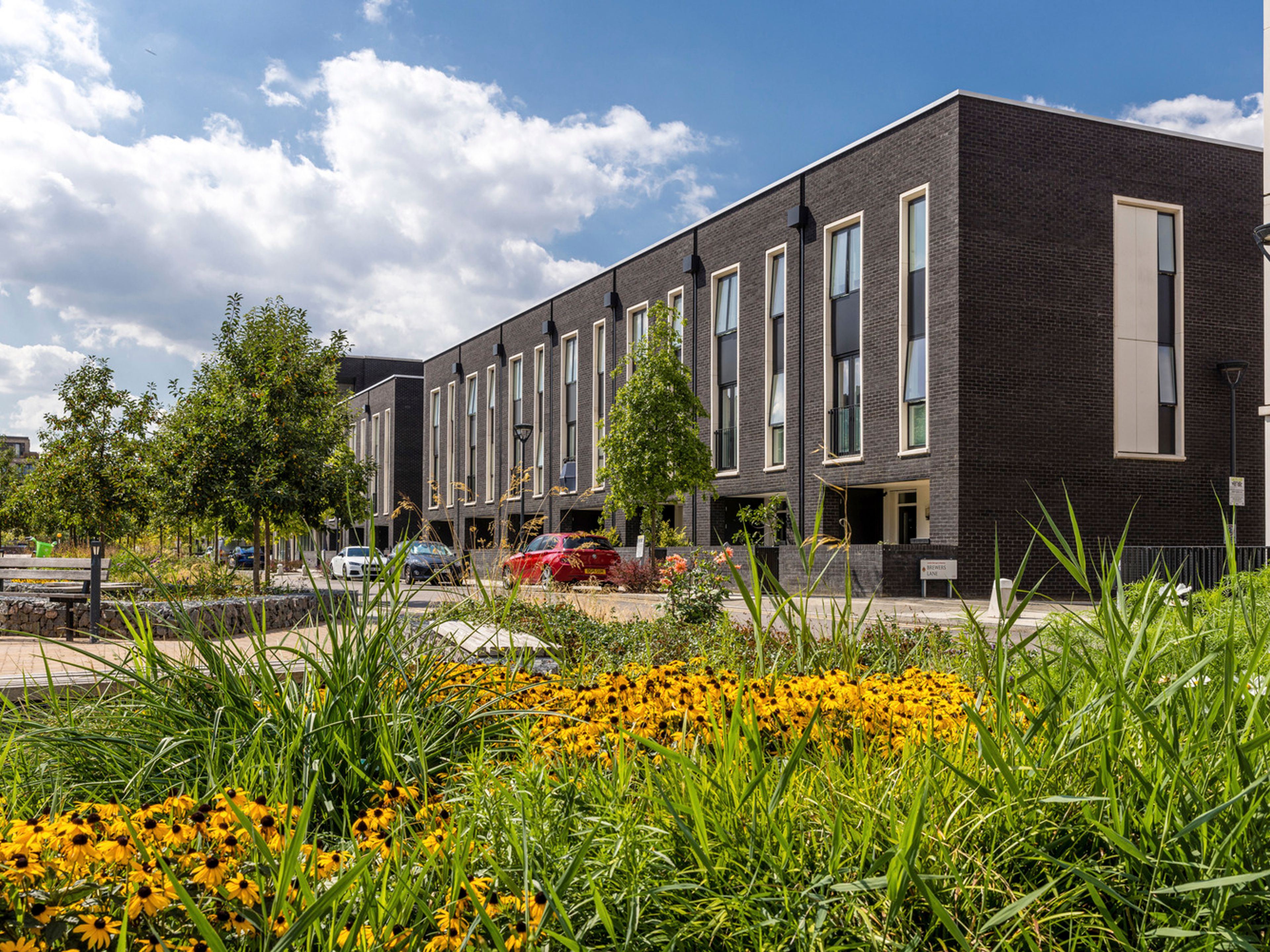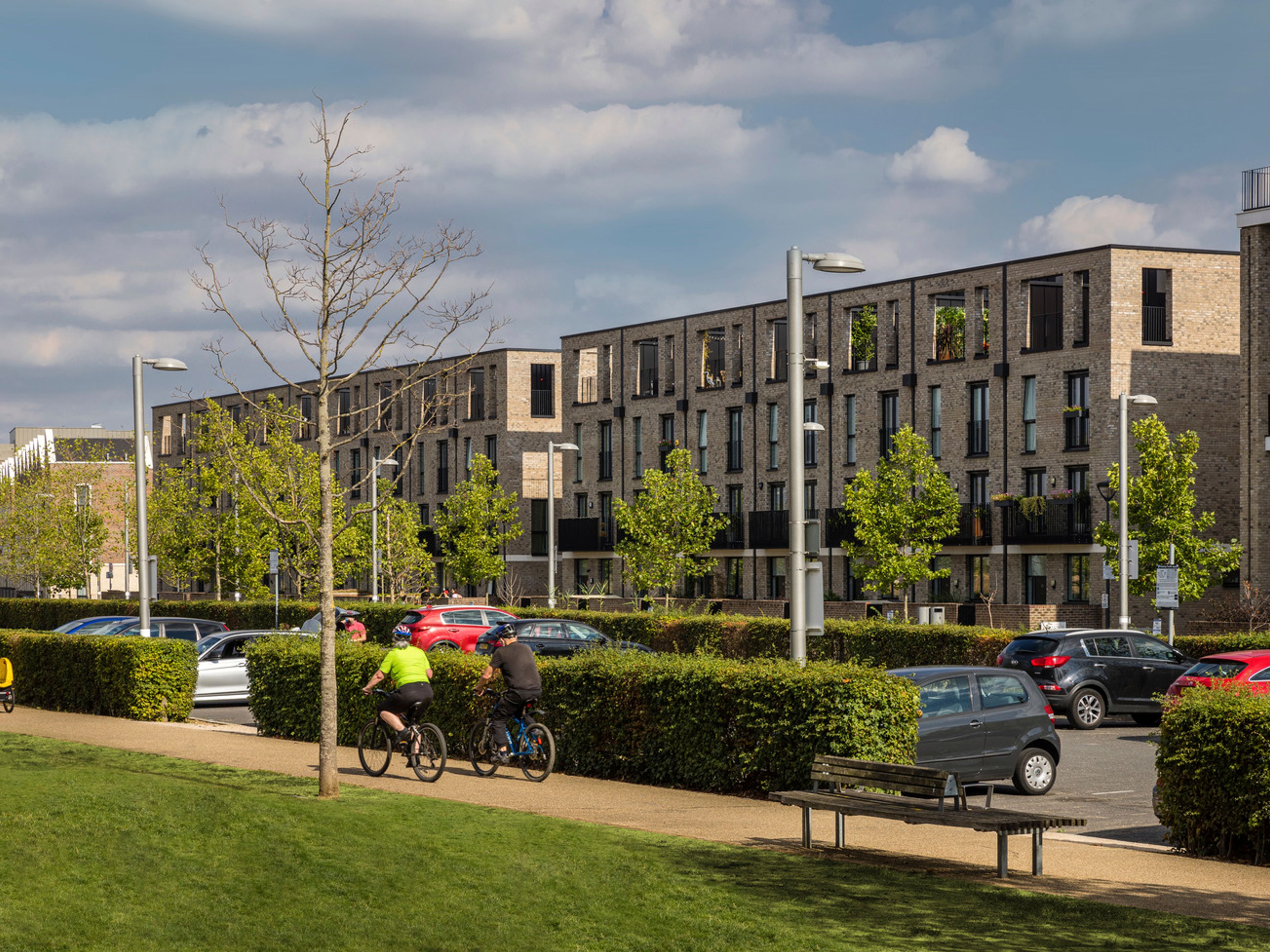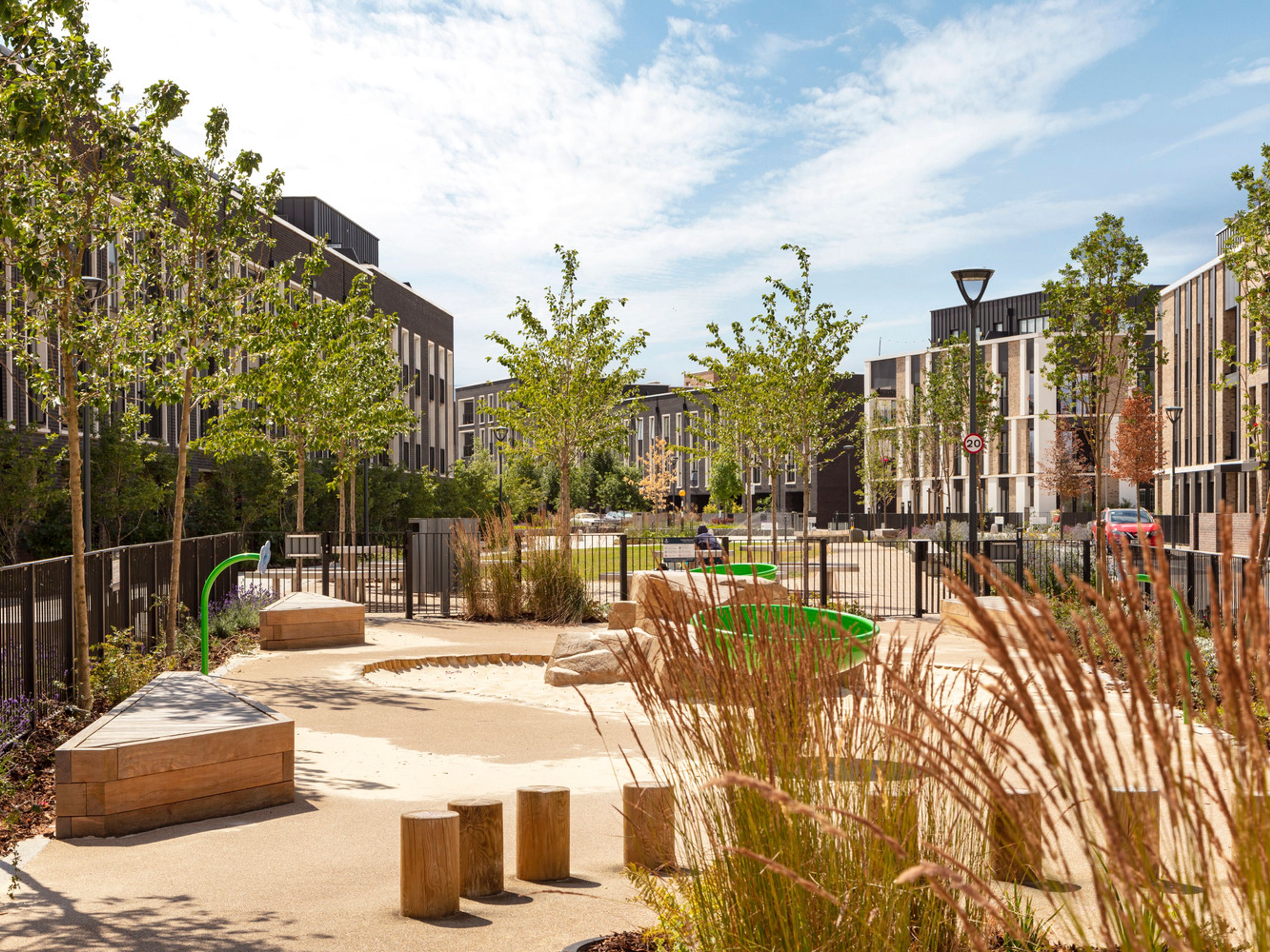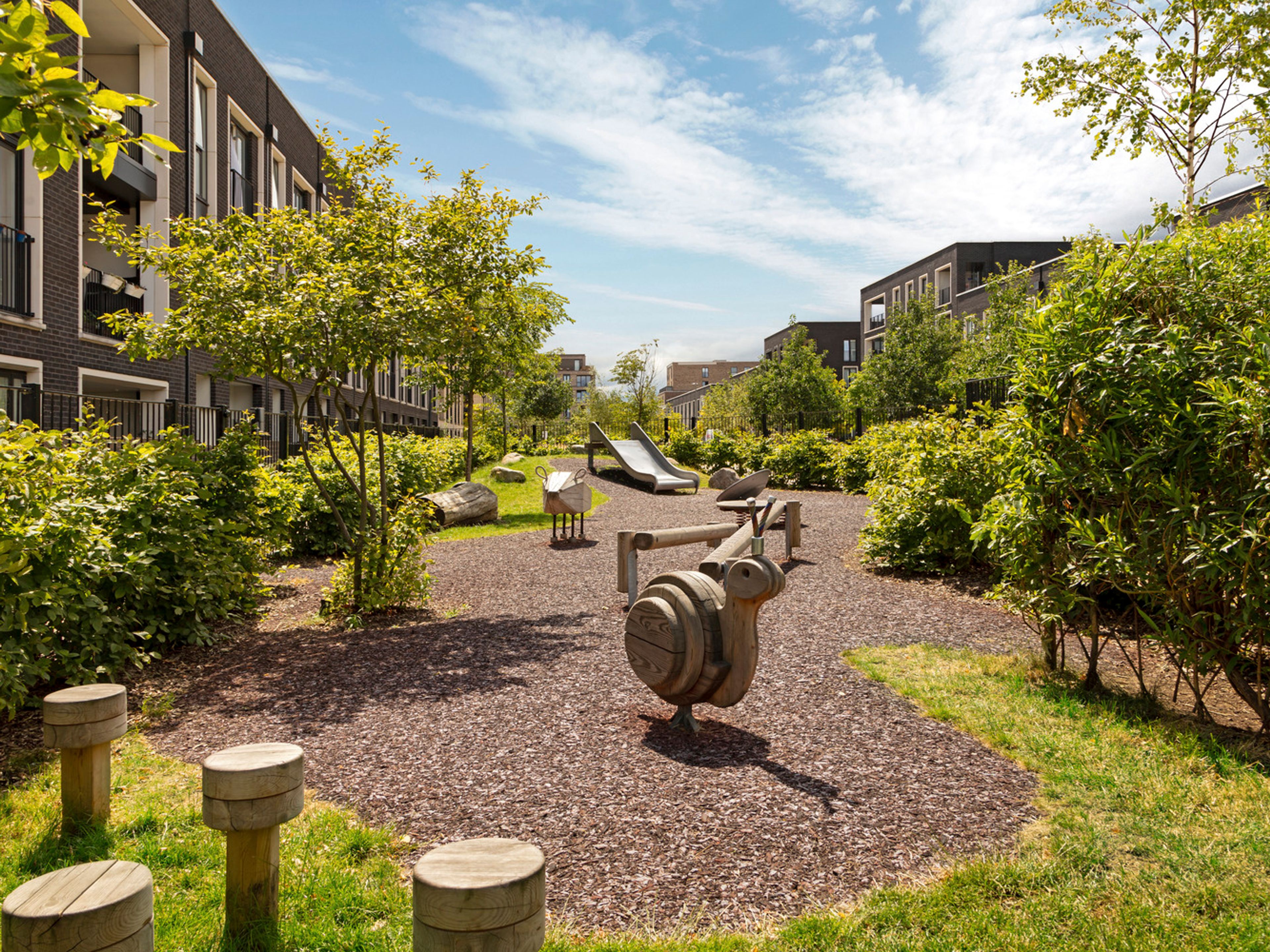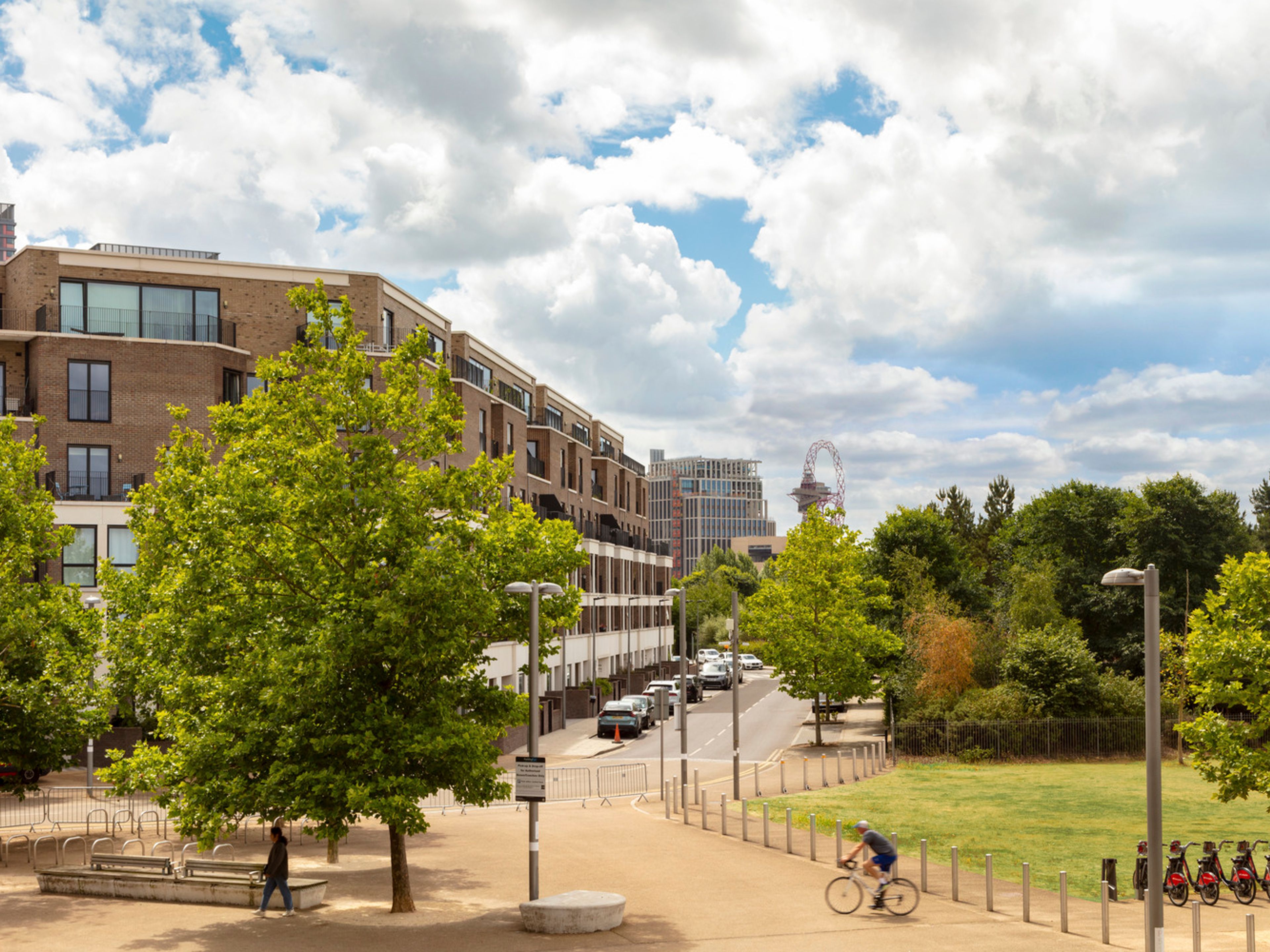For people, by people: interview with Peter Maxwell, London Legacy Development Corporation

Peter Maxwell
Director of Design at the London Legacy Development Corporation (LLDC)
While the value of a place can be found in its design quality, visual appearance and blend of ingredients, the value of a community lies in its spirit and sense of place and belonging. These are more elusive qualities to embed, but Chobham Manor on the east side of London’s Queen Elizabeth Olympic Park does just this.
Chobham Manor is London’s first Olympic legacy neighbourhood, with the final phase completed in 2022. Just over a decade after the Games, it’s a lived-in and loved place. Throughout its conception, the Make team took great care to think about how people do ordinary things in everyday life, crafting a piece of city where diversity is celebrated and people are invited to take ownership of their spaces.
The traditional London vernacular can be felt in the squares and the housing types, though the neighbourhood also distinguishes itself from predecessors. For example, while the classic London square is fenced off and privatised, here the squares are open-access, functional spaces that belong to the whole community. Along Chobham Manor's streets and in its open spaces are British fruit trees rather than ornamental plants, and residents have formed gardening groups that harvest the fruit for jam. That entices neighbours into the shared spaces, where they can spend time getting to know each other.
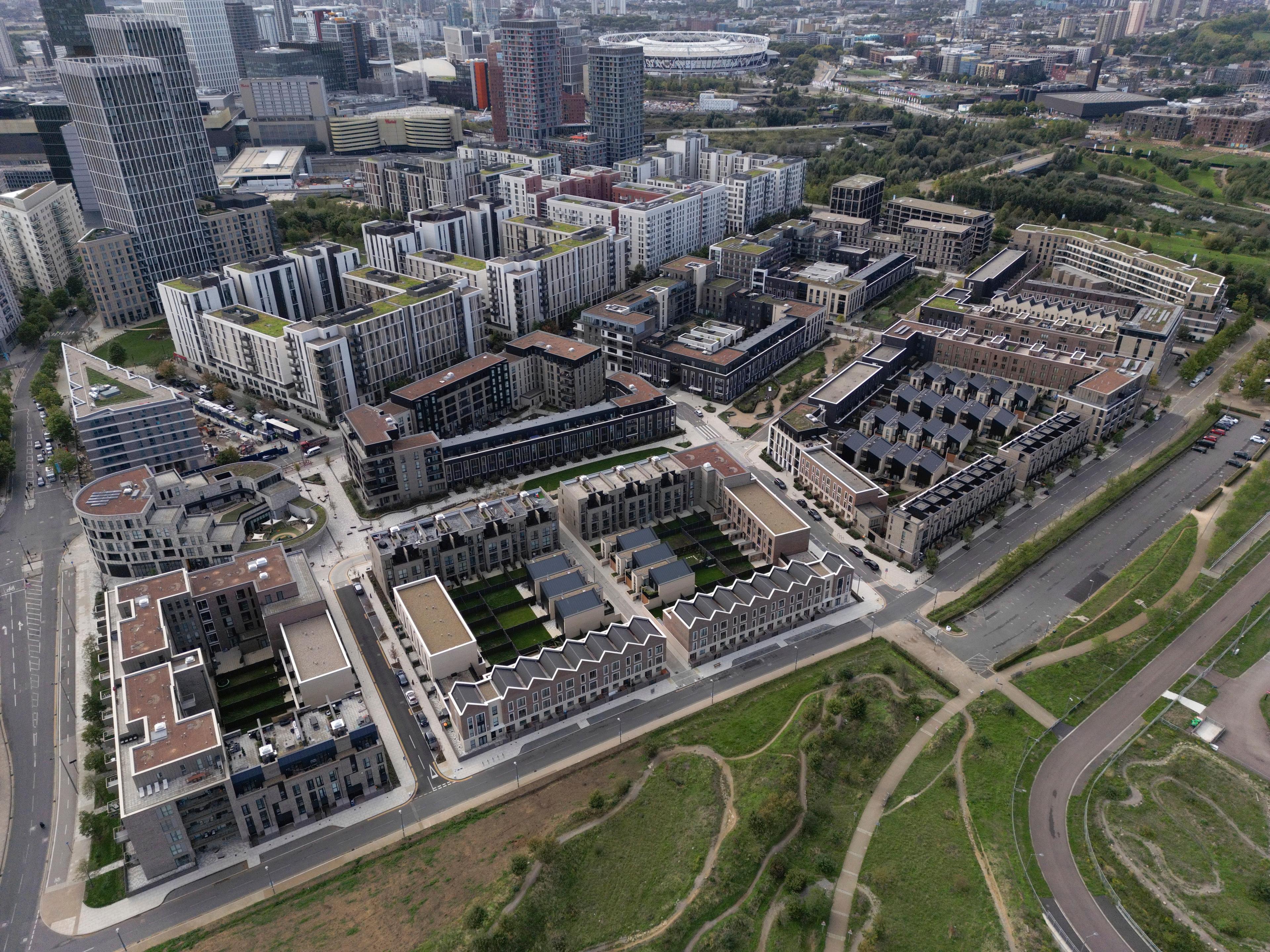
Neighbourhood integrated with the surrounding Olympic legacy site.
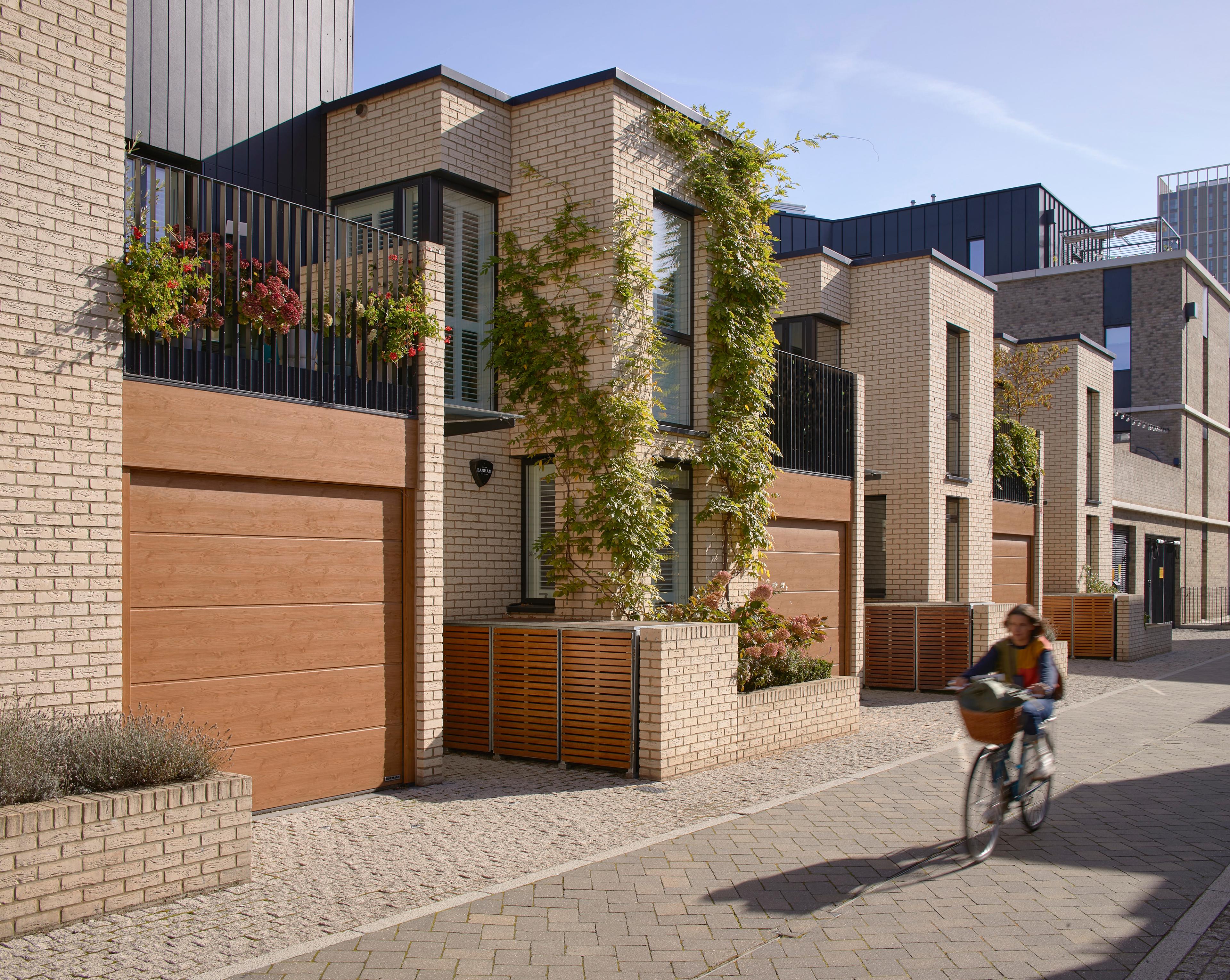
Mews houses by Make tucked away in bright, spacious laneways.
The mix of homes provides real choice for residents. Make worked with PRP to masterplan the site alongside three plot architects: Karakusevic Carson, Haworth Tompkins and AHMM. These different architect teams came together in workshops and reviews, collaborating to achieve a harmonious architectural language, the townscape evolving organically in response to the emerging whole.
The London Legacy Development Corporation (LLDC) is the organisation behind Chobham Manor as well as the wider Olympic Park regeneration. From the outset, LLDC aspired to achieve inclusive growth that improves living conditions and opportunities for the community. On a local scale, that’s manifested in the Chobham Manor Community Centre, which helps adults with additional needs into employment through work-based training, as well as the local charity Social Arc, which provides entrepreneurial coaching for young women.
Peter Maxwell, Director of Design at LLDC, expands on the wider ambitions of the Olympic Games legacy at QEOP.
The community around the park is continuously evolving, creating a new spirit of place. How has the arrival of renowned institutions and other anchors changed the park’s neighbourhoods?
Peter Maxwell: We have one of Europe’s largest new parks in the middle and significant venues on the doorstep. East Bank – Sadler’s Wells, BBC, London College of Fashion, V&A and UCL – has been brought in to change the dynamic, alongside Here East, providing not just visitor attractions but also proper opportunities for the surrounding parts of East London. Loughborough – with its tech, design and STEM focus – and UCL have joined existing universities like Queen Mary and East London at Here East. It's about providing life chances and educational chances that weren’t necessarily there before.
A significant amount of time, effort and money have been spent on the Olympics, and it wasn’t just about the two weeks of the Games; it was all about the legacy. It was about changing the opportunities for communities around here and improving the health and education attainment.
LLDC, as long-term steward of the land, is working towards a different time horizon than many commercial developers. How does that shift perspectives, priorities and investments?
PM: This is a generalisation, but in the UK, the new-build housing market is mostly build-to-sell. Unless it’s founded on altruism or it’s a larger development, there’s a limit to how much developers care about the place, because most housing will sell. In regeneration, places take a long time to develop. Residents are also your customers and advocates.
LLDC does annual surveys to understand what our residents think about their neighbourhood. The point is to learn as an industry and not make the same mistake again. Not everything can be done by design, but design can set some of the foundation that allows communities to thrive, and that’s why we really value design quality – from safe street layouts that allow human interaction to homes designed to allow people to stay if their circumstances change. We have seen across London that more local authorities are taking greater control because there’s a social purpose, and that they can deliver value in all senses of the word – community value, economic value – by being a lot more hands on.
We are the freeholder of the land, so for our larger developments we would never just sell the land to the private sector, because we want to ensure the delivery of wider regeneration outcomes. We have found that the best way to achieve that is through partnerships or agreements with the private sector and, in extension, their design teams.
LLDC collaborated with the Chobham Manor project team to ensure the highest quality of design. This iterative process takes time and demonstrates a commitment to positive placemaking. Why is this so important to LLDC?
PM: Chobham was designed when the Mayor had a really strong focus on learning from the London vernacular instead of continental case studies. LLDC talks a lot as an organisation about the opportunity here and the creation of a Great Estate. It is not a historicist’s view of looking back at Portland or Grosvenor, but it’s learning some of the lessons from those places. Design codes and parameters inform how the development could come forward, and in all the legacy neighbourhoods there’s a clear sense of how certain conditions should be addressed.
Chobham is located on the park, and if you compare it to different contexts and periods – for example, how homes address Victoria Park or Regent’s Park – there’s a certain regularity and commonality. We looked at those in detail, and so have the consultant teams throughout the years. This might be a slightly different neighbourhood catering for slightly different people and communities, but it does have a strength of idea that holds the place together. So although we use a number of different architects, there’s still a commonality between blocks and plots and the overall masterplan.
Chobham has an unusual mix of homes, with a high proportion of larger units to accommodate families and multi-generational living in a city context. Can you expand on this and what it means for the wider area?
PM: In the past, Newham had issues related to transience, with people coming into the borough but not staying for a very long time. At Chobham, and in Newham more widely, there was also a large number of extended families, so much larger homes were needed to meet that demographic need. Also, Newham is one of the youngest boroughs in the UK, with a lot of children and people below the age of 24.
That was all taken into account when we planned the neighbourhoods. We wanted to make sure the homes could accommodate these larger families, and that’s why 75% of homes are 3-beds and above. It’s not just larger families but particular groups as well. So at Chobham we developed the multigenerational homes, which are five bedrooms plus an annexe. That came out of the Olympic Games pledge to make it the most inclusive and accessible legacy ever.

Streetscapes designed for communities to form and families to grow. (Photo © Chris Winter.)
“The residents really do love living there, and they want to live there for the next five-plus years.”
Although the design of the buildings might not be instantly recognisable, it has a familiar and comfortable feel that harks back to residential neighbourhoods throughout the city.
PM: That was very deliberate, Chobham being the first neighbourhood. That gives a sense of place that people can reflect on. The scale and types of homes are comfortable, and soon they’ll be recognisable as well. People respond positively to that, which we know from feedback.
What I find encouraging about Chobham is that people may like or dislike the style of the architecture, but it’s got a real mixture of typologies that I haven’t seen in a long time, and the quality is consistently high. The residents really do love living there, and they want to live there for the next five-plus years. Part of the post-occupancy survey is to understand whether we’ve met some of the broad outcomes, and we think we have. This goes out to Make, PRP and the other architects involved – that it actually has a comfortable familiarity that people really like and forms a successful transition from the East Village into the park.
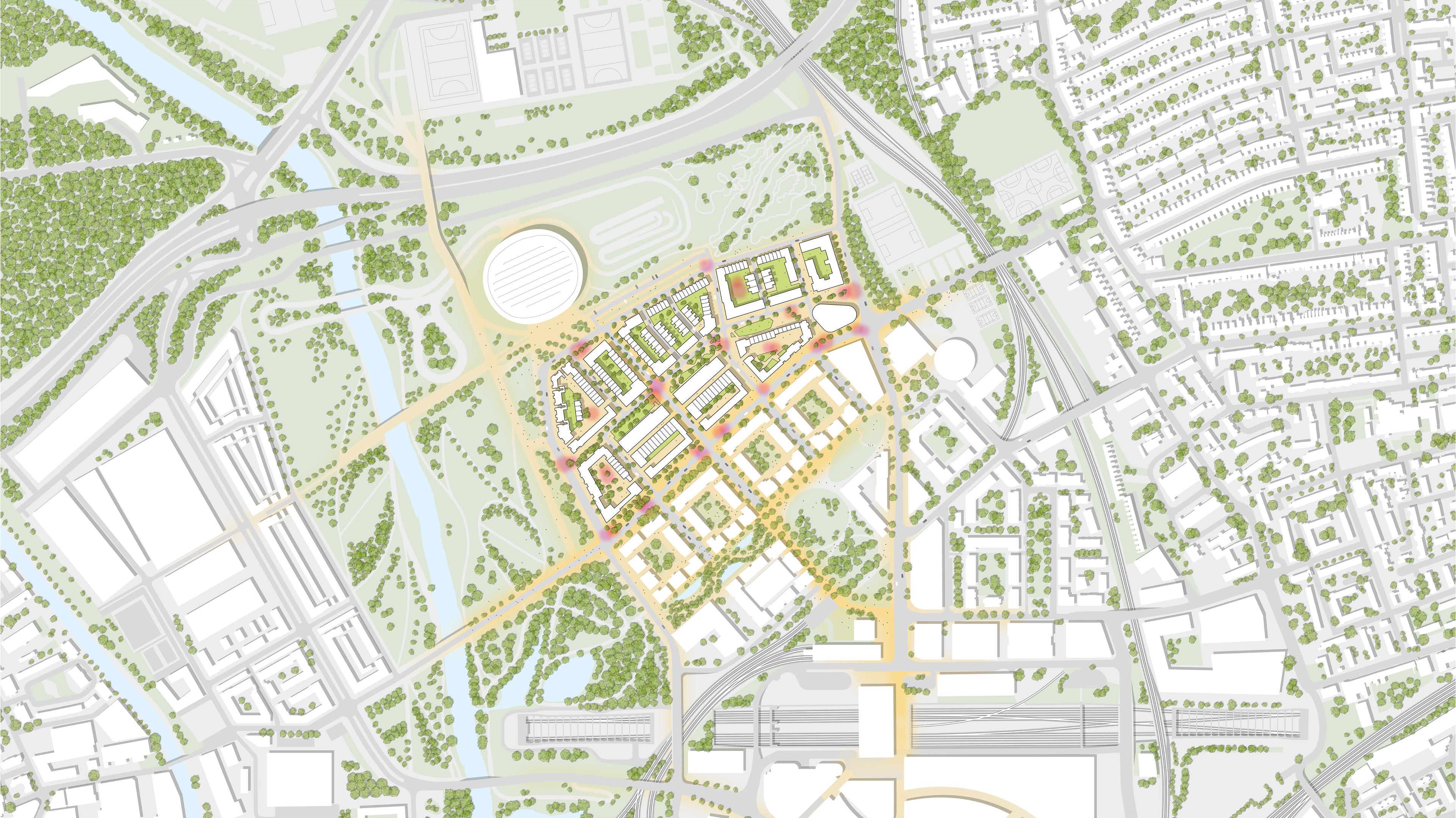
Tags
Authors
Peter Maxwell is leading the architecture, masterplanning and public realm for the redevelopment of Queen Elizabeth Olympic Park, including the delivery of a new cultural and education district and five new residential neighbourhoods. He has director-level experience implementing major design projects in the UK, the Middle East and New Zealand.
